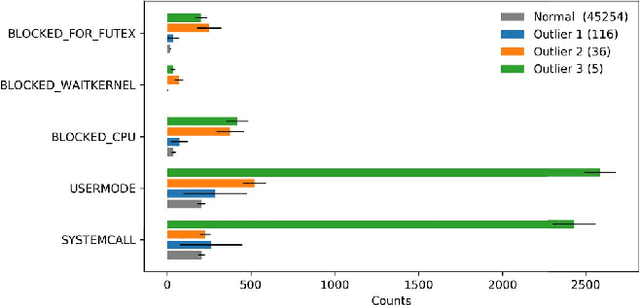Naser Ezzati-Jivan
Utilizing Graph Neural Networks for Effective Link Prediction in Microservice Architectures
Jan 25, 2025Abstract:Managing microservice architectures in distributed systems is complex and resource intensive due to the high frequency and dynamic nature of inter service interactions. Accurate prediction of these future interactions can enhance adaptive monitoring, enabling proactive maintenance and resolution of potential performance issues before they escalate. This study introduces a Graph Neural Network GNN based approach, specifically using a Graph Attention Network GAT, for link prediction in microservice Call Graphs. Unlike social networks, where interactions tend to occur sporadically and are often less frequent, microservice Call Graphs involve highly frequent and time sensitive interactions that are essential to operational performance. Our approach leverages temporal segmentation, advanced negative sampling, and GATs attention mechanisms to model these complex interactions accurately. Using real world data, we evaluate our model across performance metrics such as AUC, Precision, Recall, and F1 Score, demonstrating its high accuracy and robustness in predicting microservice interactions. Our findings support the potential of GNNs for proactive monitoring in distributed systems, paving the way for applications in adaptive resource management and performance optimization.
Picturing Ambiguity: A Visual Twist on the Winograd Schema Challenge
May 28, 2024Abstract:Large Language Models (LLMs) have demonstrated remarkable success in tasks like the Winograd Schema Challenge (WSC), showcasing advanced textual common-sense reasoning. However, applying this reasoning to multimodal domains, where understanding text and images together is essential, remains a substantial challenge. To address this, we introduce WinoVis, a novel dataset specifically designed to probe text-to-image models on pronoun disambiguation within multimodal contexts. Utilizing GPT-4 for prompt generation and Diffusion Attentive Attribution Maps (DAAM) for heatmap analysis, we propose a novel evaluation framework that isolates the models' ability in pronoun disambiguation from other visual processing challenges. Evaluation of successive model versions reveals that, despite incremental advancements, Stable Diffusion 2.0 achieves a precision of 56.7% on WinoVis, only marginally surpassing random guessing. Further error analysis identifies important areas for future research aimed at advancing text-to-image models in their ability to interpret and interact with the complex visual world.
Automatic Cause Detection of Performance Problems in Web Applications
Mar 08, 2021



Abstract:The execution of similar units can be compared by their internal behaviors to determine the causes of their potential performance issues. For instance, by examining the internal behaviors of different fast or slow web requests more closely and by clustering and comparing their internal executions, one can determine what causes some requests to run slowly or behave in unexpected ways. In this paper, we propose a method of extracting the internal behavior of web requests as well as introduce a pipeline that detects performance issues in web requests and provides insights into their root causes. First, low-level and fine-grained information regarding each request is gathered by tracing both the user space and the kernel space. Second, further information is extracted and fed into an outlier detector. Finally, these outliers are then clustered by their behavior, and each group is analyzed separately. Experiments revealed that this pipeline is indeed able to detect slow web requests and provide additional insights into their true root causes. Notably, we were able to identify a real PHP cache contention using the proposed approach.
* 8 pages, 7 figures, IEEE ISSREW 2019
 Add to Chrome
Add to Chrome Add to Firefox
Add to Firefox Add to Edge
Add to Edge